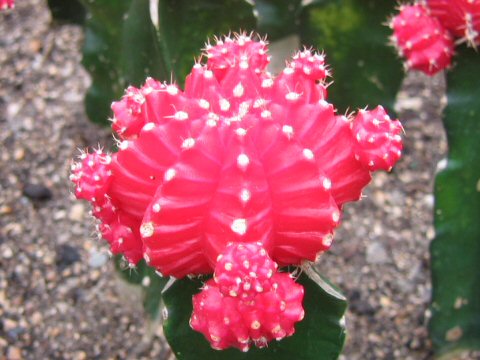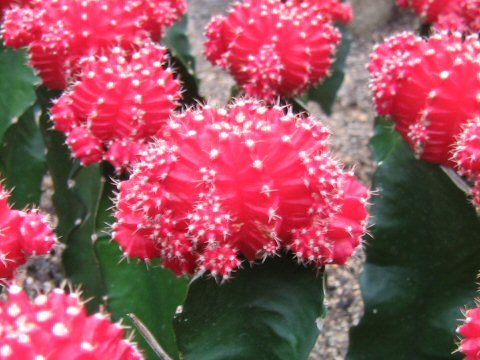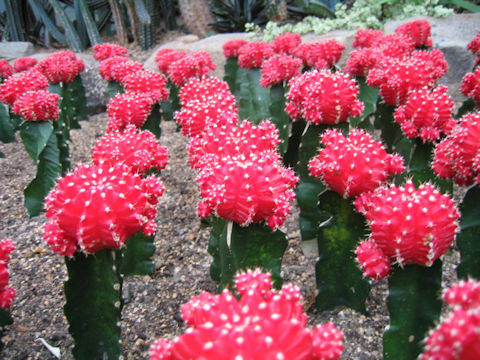 |






|

|
pOACÌ´YíðAíªÅüǵ½|iíÅ·BtÎfðÜÁ½½È¢½ßS̪ÔAäØÉÚ¬ØðµÄçÄçêÜ·BÓ¤ÉÍu³ñ©¿ã¤iHylocereus guatemalensisjvªäØƵÄgíêéæ¤Å·B
|

|
T{eÈMmJLE®Ì
óT{eÅAw¼Í Gymnocalycium mihanovichii var. friedrichii cv. HibotanBp¼Í Moon cactusARuby ballB
|

|
The Moon cactus (Gymnocalycium mihanovichii var. friedrichii cv. Hibotan) belongs to Cactaceae (the Cactus family). It is a ball cuctus that is a horticultural variety that was improved in Japan from a species native to Paraguay. It has no chlorophyll and is entirely reddish, and is grown by grafting onto a rootstock. The American beauty (Hylocereus guatemalensis) is usually used as a rootstock.
|

|
ØEéi\EjsuìRiiTjA¨vÉÄA2004N0619úBeB
|




